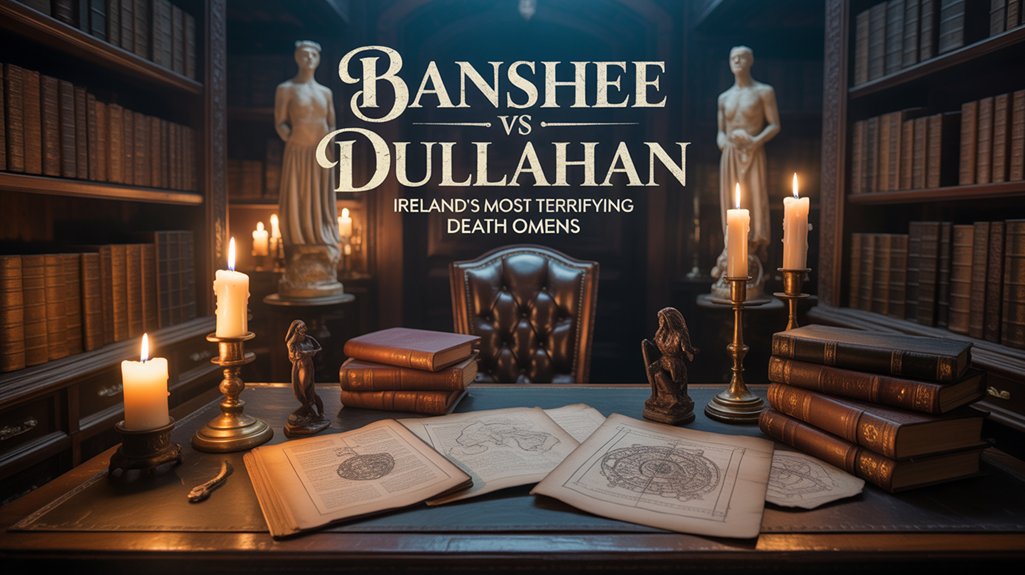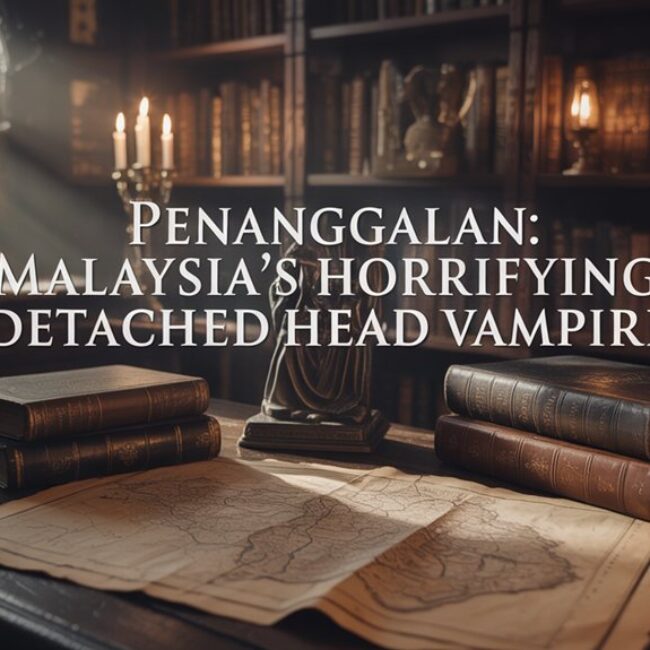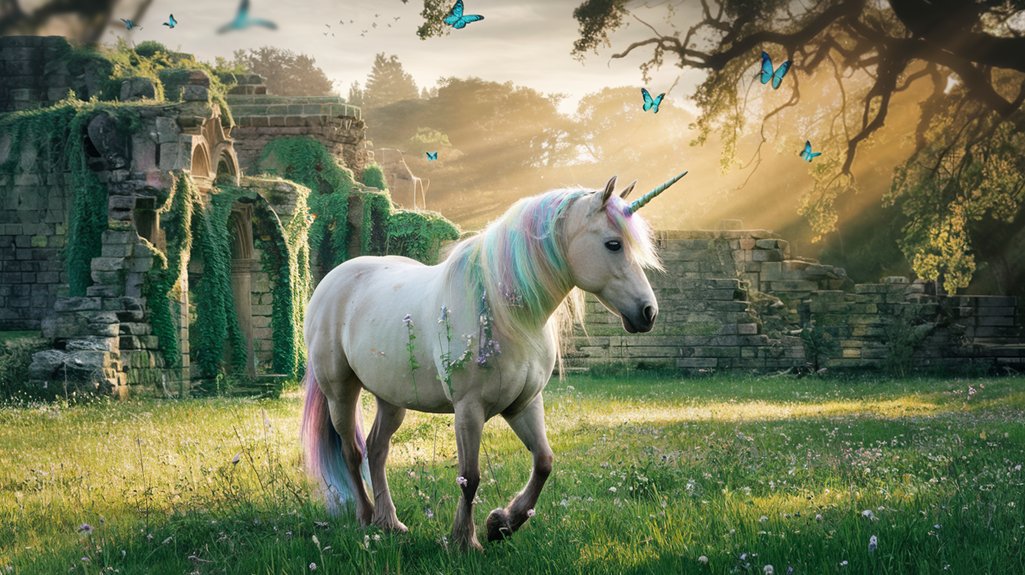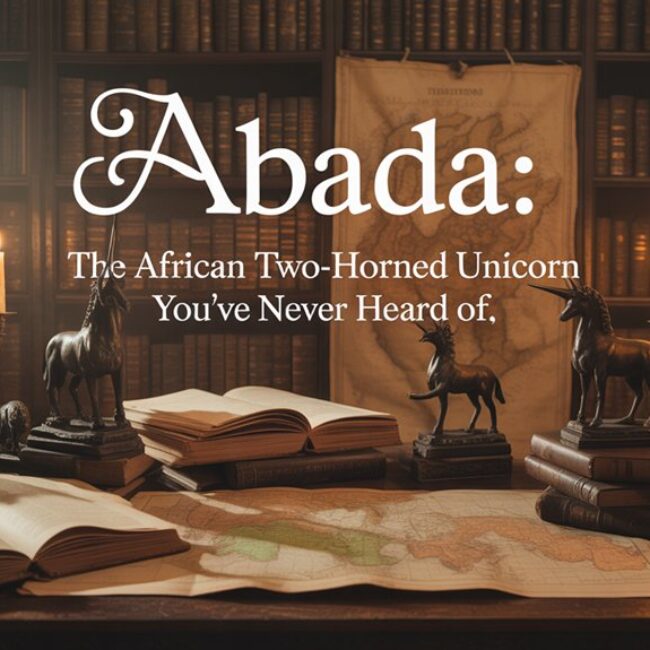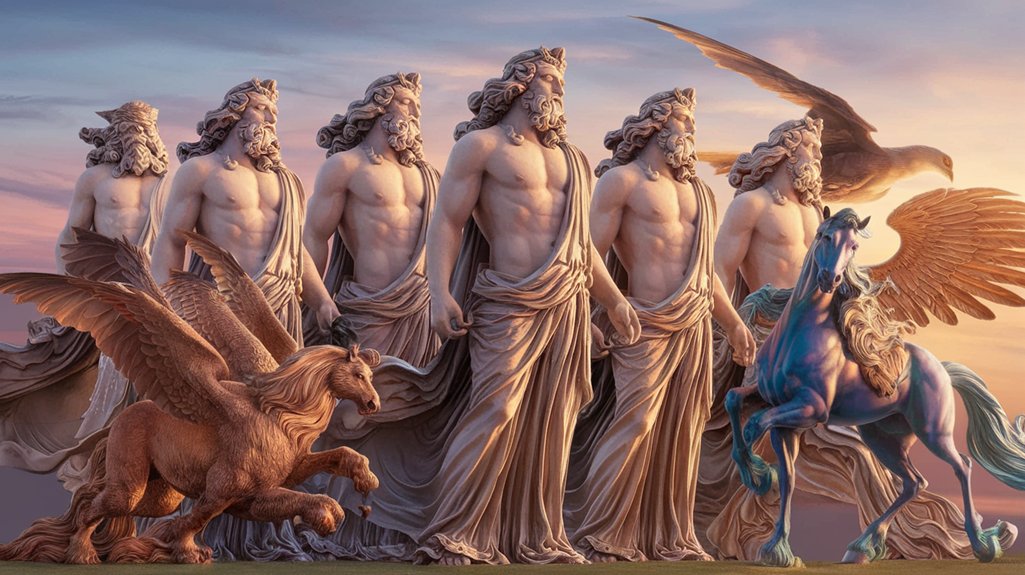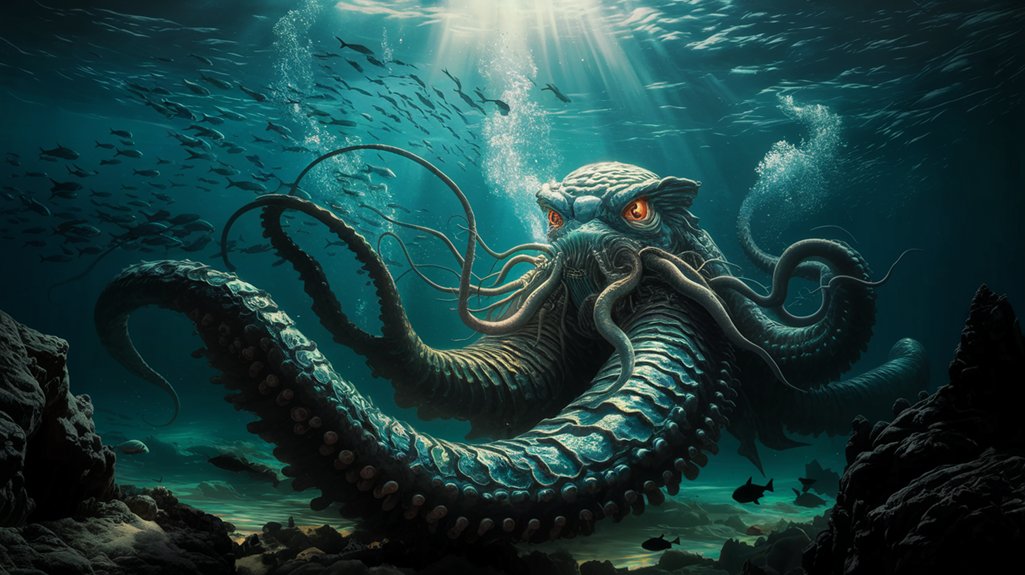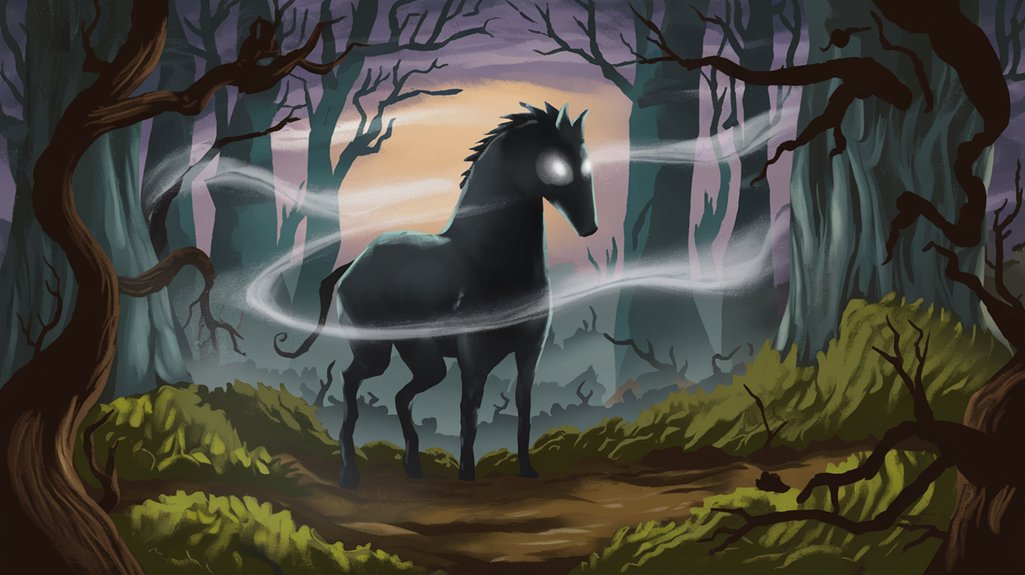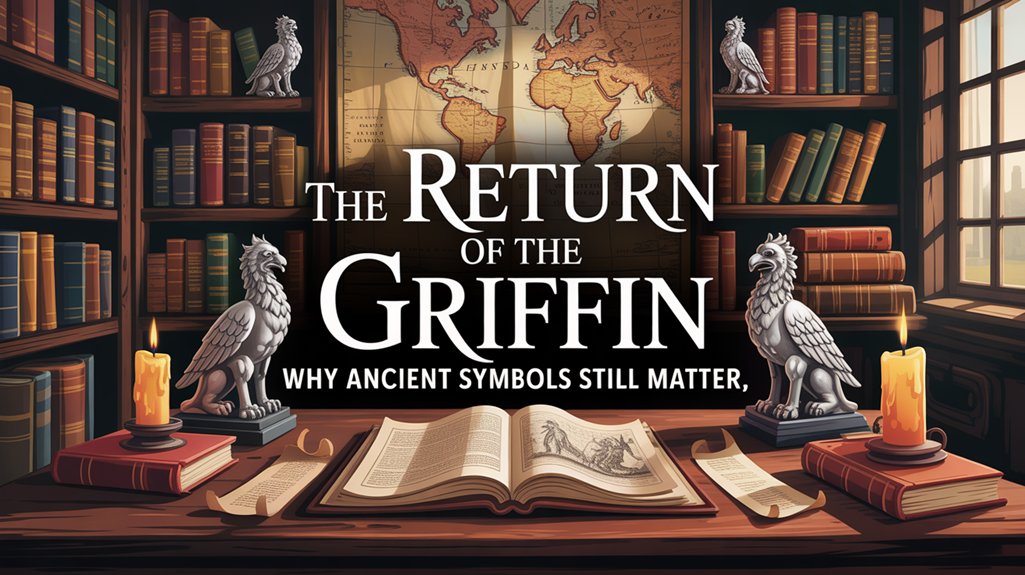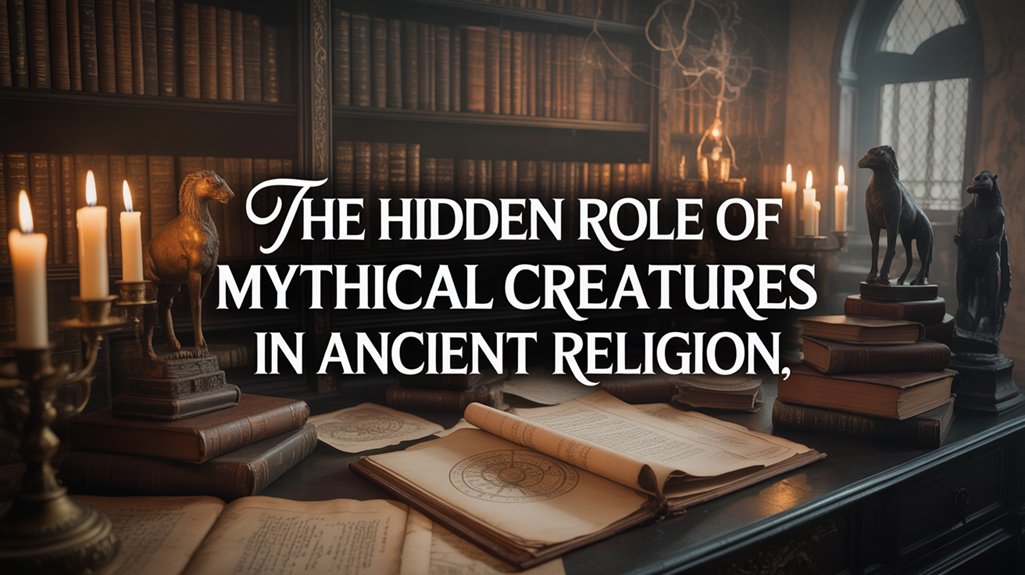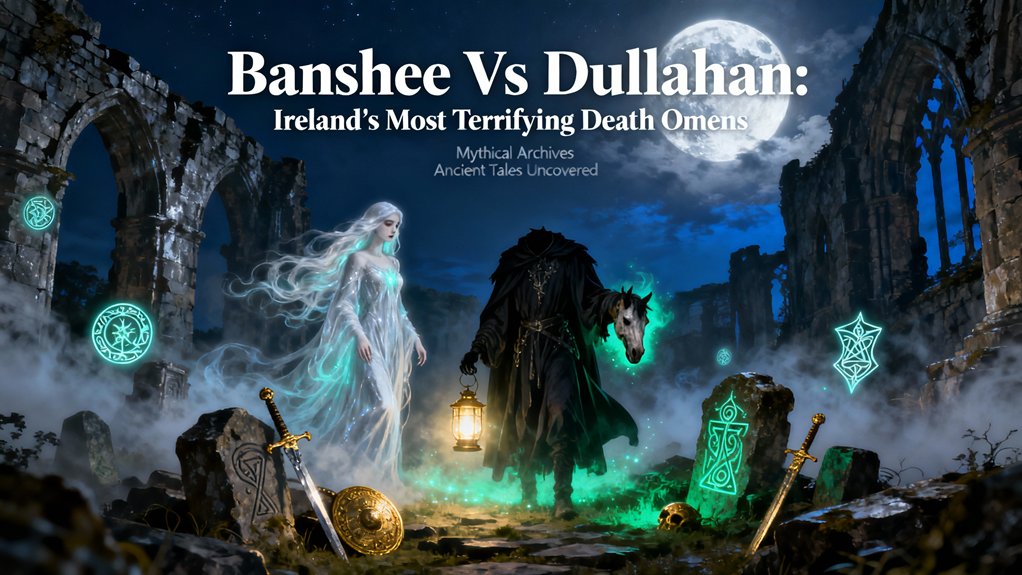
You’ll encounter Ireland’s most eldritch death omens through two distinct manifestations: the Banshee, whose keening lament binds her to specific Gaelic bloodlines (particularly those bearing O’ and Mac surnames), appears as a solitary woman with reddened eyes mourning near ancestral estates, while the Dullahan—a headless psychopomp linked to pre-Christian deity Crom Dubh—rides silently upon his grotesque coach of human thighbones, speaking only once to pronounce the doomed’s name, their contrasting methods revealing ancient Ireland’s liminal understanding of mortality’s threshold.
Table of Contents
ToggleKey Takeaways
- Banshee warns of death through piercing wails and is tied to specific Gaelic families like O’ and Mac surnames.
- Dullahan is a headless rider carrying his skull who silently approaches and speaks only the dying person’s name.
- Banshee appears as a weeping woman and mourns for families; Dullahan executes fate without emotion or ceremony.
- Both entities originated from pre-Christian Irish beliefs as psychopomps guiding souls to the afterlife realm of Aos Sí.
- Modern sightings persist at rural crossroads and ancestral homesteads, maintaining their presence in contemporary Irish cultural consciousness.
Origins and Ancient Roots of Ireland’s Death Messengers
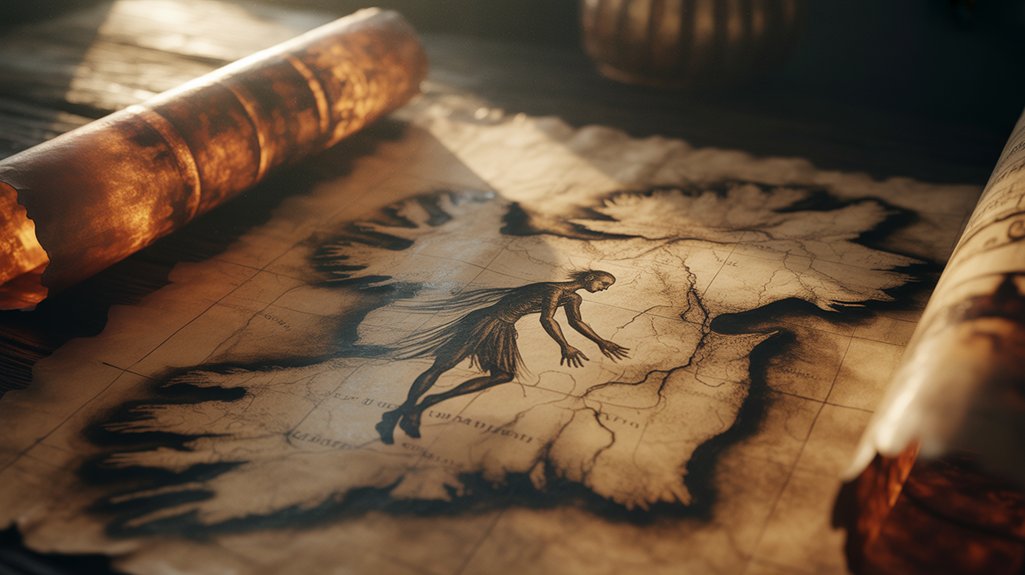
Before Christianity cast its transformative shadow across the Emerald Isle in the fifth century CE, Ireland’s pre-Celtic and Celtic inhabitants recognized death not as an abrupt severance but as a liminal threshold—a gossamer boundary between corporeal existence and the otherworld, the Aos Sí.
You’ll find the ancient folklore positioning both Banshee and Dullahan as psychopomps, eldritch guides shepherding souls through that spectral crossing. Their cultural significance extends beyond mere superstition into sophisticated metaphysical frameworks.
The Banshee emerged from the bean sídhe tradition, female spirits dwelling in burial mounds who wailed for specific bloodlines. A covenant bound in ancestral soil.
The Dullahan, conversely, descended from chimeric representations of Crom Dubh, a pre-Christian deity demanding sacrifice. Headless and otherworldly.
These entities weren’t monsters to fear but necessary architects of cosmic order—death’s heralds maintaining equilibrium between domains.
You’re encountering Ireland’s profound attempt at reconciling mortality’s terror with spiritual continuity.
Physical Appearance and Manifestations: How to Recognize Each Entity
Understanding these entities’ origins matters little if you can’t recognize their manifestation when the veil thins.
The banshee appears as a solitary woman—sometimes young and beautiful, sometimes ancient and haggard—her eyes perpetually reddened from centuries of weeping. She manifests near family estates, beneath windows, beside rivers where she washes bloodstained burial shrouds. Her keening pierces the night air.
Through bloodied tears and centuries of sorrow, she wails beneath your window—beautiful or haggard, always weeping, forever warning.
The Dullahan presents far more eldritch imagery. This headless rider carries his own decaying skull, which grins with phosphorescent malevolence. His appearance differences are unmistakable: blackened flesh, eyes that dart about like flies, a mouth stretched ear to ear.
He drives a midnight coach fashioned from chimeric materials—human thighbones for spokes, worm-ridden leather for canopy. His manifestation settings include remote crossroads and ancient burial grounds. Where the banshee remains stationary, keening her lament, the Dullahan rides with terrible purpose, stopping only at death’s appointed door.
Methods of Warning: Wailing Cries Versus Silent Approaches
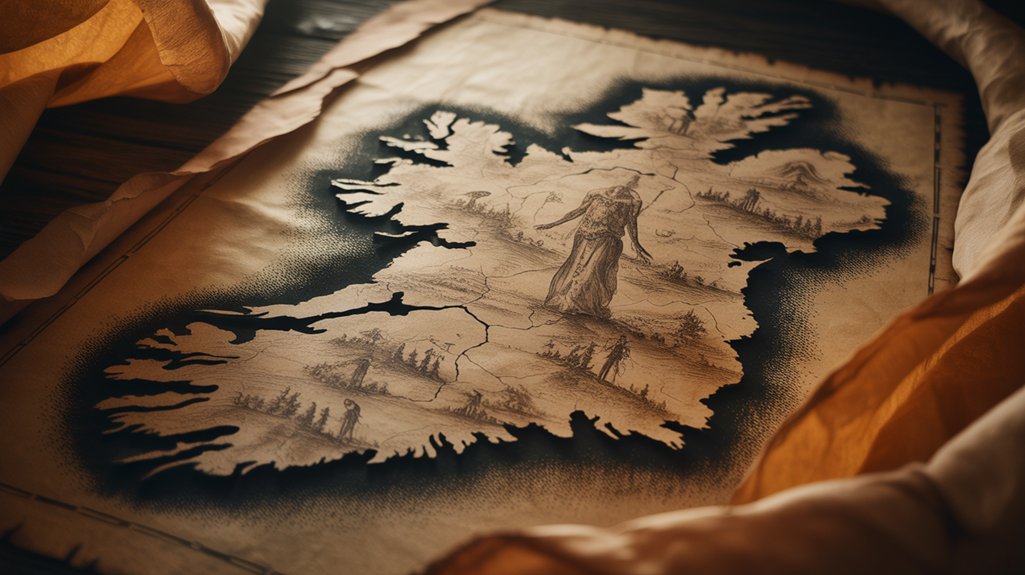
Though both entities herald death’s approach, the banshee and Dullahan employ fundamentally opposed methodologies—one announces through acoustic torment, the other through dreadful silence.
You’ll recognize the banshee’s wailing significance immediately: her keening pierces the midnight air with eldritch resonance, a sound that freezes blood and splinters consciousness. She *wants* you to hear, to prepare. Her cries traverse octaves no human throat could produce—somewhere between infant’s wail and wind through ancient stones. This vocalization grants warning, however unwelcome.
The Dullahan operates differently. Complete silence.
His silent foreboding carries equal terror precisely because you won’t hear him coming. No hoofbeats despite galloping horses, no creaking cart wheels, no breath from that severed head. He materializes through chimeric stillness, calling your name once—the only sound he makes.
When you hear it, you’re marked. The banshee mourns; the Dullahan claims. One respects familial bonds through lamentation; the other executes fate’s decree without ceremony.
Regional Variations and Family Connections Across Ireland
Across Ireland’s provincial boundaries, the banshee maintains intricate genealogical ties that bind her to specific families—predominantly those of ancient Gaelic lineage bearing the prefixes O’ and Mac.
You’ll find her attachment strongest in Munster and Connacht, where regional folklore preserves the names she守護s: the O’Briens, O’Neills, MacCarthys, O’Gradys. She doesn’t wander freely.
The Dullahan recognizes no such bloodline constraints. This eldritch coachman traverses all territories without familial obligation, his appearance governed by death’s arbitrary timing rather than ancestral covenant.
Provincial variations alter his manifestation—sometimes riding alone through Ulster’s glens, elsewhere driving his chimeric death-coach through Leinster’s crossroads—but family lore never claims him as hereditary harbinger.
This distinction matters. The banshee’s selective haunting alters her into something intimate, terrible, known. A family curse, perhaps, or dubious protection.
The Dullahan remains fundamentally foreign—death’s mercenary rather than death’s familiar correspondent, accountable to no mortal lineage.
Modern Sightings and Cultural Legacy in Contemporary Ireland
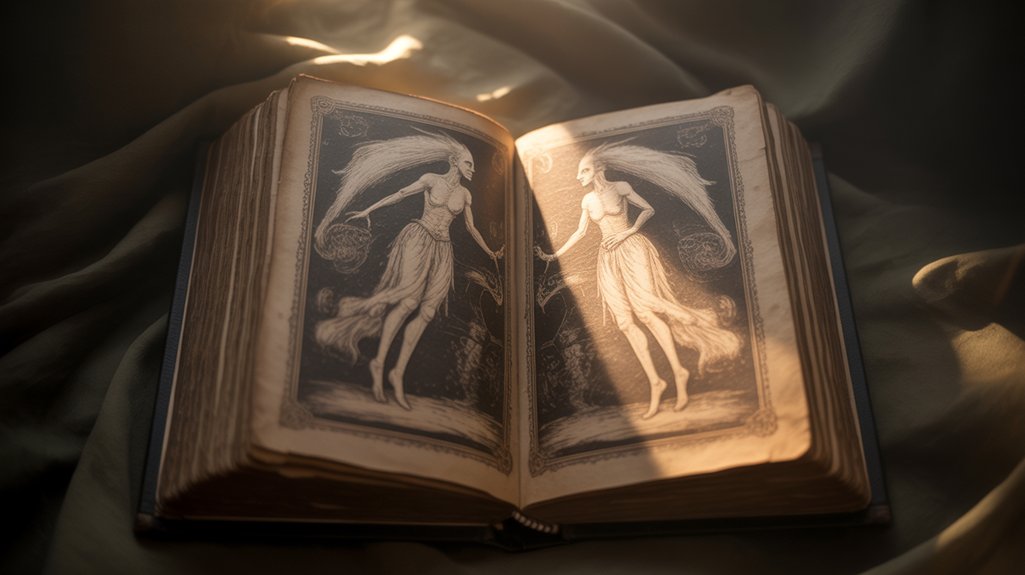
While twentieth-century rationalism attempted to exile Ireland’s death omens to museum displays and folklore archives, the banshee and Dullahan persist in contemporary consciousness with surprising significance.
You’ll discover their presence woven through modern Ireland’s cultural fabric, manifesting in unexpected ways that defy dismissal.
Contemporary encounters reshape these eldritch harbingers through urban legends and media representations, yet their essential nature remains unchanged.
Modern sightings cluster around:
- Rural crossroads where motorists report chimeric horsemen during liminal hours
- Ancestral homesteads where keening voices precede family deaths despite generations of absence
- Digital platforms documenting unexplained phenomena that mirror traditional descriptions
You’ll find their legacy preserved not through superstition but through cultural memory—that ancient knowing that transcends empirical proof.
Irish writers, filmmakers, and musicians channel these death omens into contemporary narratives, ensuring their survival.
The banshee’s wail echoes through modern literature. The Dullahan rides through cinema.
Ireland’s relationship with mortality remains intimate, defiant, unbroken.
Frequently Asked Questions
Can Protective Charms or Rituals Ward off a Banshee or Dullahan?
You’ll find few protective talismans prove effective against these eldritch harbingers, for they announce fate itself, not malevolent intent.
Traditional rituals—iron horseshoes, rowan crosses, salt circles—might deter lesser spirits, yet banshees and dullaháin transcend such wards.
They’re messengers, not attackers.
Celtic lore suggests respectful acknowledgment rather than defensive magic; their appearance signals predetermined death, immutable destiny.
Your freedom lies not in resistance but acceptance, recognizing these chimeric entities as psychopomps honoring ancient covenant between mortality and the Otherworld.
What Happens if You Directly Confront a Banshee or Dullahan?
Direct confrontation with either entity proves catastrophic.
You’ll experience primal fear response—your autonomy stripped away as their eldritch presence overwhelms mortal willpower.
Meeting a banshee’s gaze invites immediate death; you’re marked irrevocably.
The Dullahan’s acknowledgment is worse: speaking your name seals your fate, extracting your soul.
Ancient chronicles warn that challenging these harbingers doesn’t grant freedom—it accelerates doom.
They’re immutable forces, chimeric manifestations of mortality itself, beyond negotiation or defiance.
Are Banshees and Dullahans Connected to Specific Causes of Death?
Neither entity predicts specific death causes in authentic banshee origins or dullahan folklore.
You’ll find the banshee heralds death’s approach—any death—within her bound families, keening across moonlit bogs without distinction between illness, violence, or age.
The dullahan, that eldritch headless rider, announces death’s precise moment but not its method.
Both exist as psychopomps marking fate’s inexorable boundary, not physicians diagnosing mortality’s variants.
Their power transcends causation; they embody death’s certainty itself, dwelling in liminal spaces between life’s final breath and eternal silence.
Do Other Cultures Have Similar Death Omen Figures Like These?
Death’s messengers weave through every culture’s tapestry like threads of shadow.
You’ll find Europe’s hooded Grim Reapers stalking medieval chronicles, while Native American Skinwalkers herald doom through shapeshifting malevolence.
Japan’s Yurei—pale, vengeance-driven spirits—emerge from unresolved mortality, their eldritch presence marking imminent passage.
Ancient Greece’s Keres, winged and bloodthirsty, descended upon battlefields as chimeric harbingers.
These entities transcend mere folklore; they’re humanity’s universal attempt to personify mortality’s approach, granting you fragile preparation for death’s inevitable arrival.
Can These Entities Predict Your Own Death or Only Others’?
You’ll receive personal death predictions from both entities—they herald *your* demise, not merely others’.
The banshee’s keening targets specific bloodlines, wailing exclusively for your family’s approaching end.
The Dullahan appears directly to you, calling your name once—that eldritch summons means immediate death.
However, both occasionally deliver communal death warnings during catastrophic events: plagues, battles, famines.
These aren’t gossips sharing neighborhood news; they’re psychopomps marking *your* soul’s departure from this liminal world.
Conclusion
You’ll find these eldritch harbingers persist beyond folklore’s dusty archives. In 2009, a County Cork woman reported hearing the banshee’s keening hours before her grandmother’s passing—her account mirrors hundreds documented across centuries. Whether you encounter the dullahan’s headless specter or the banshee’s chimeric wail, you’re touching Ireland’s liminal threshold between worlds. These death omens aren’t mere superstition. They’re living heritage, ancient knowledge that refuses burial, demanding reverence from those who’d listen.

